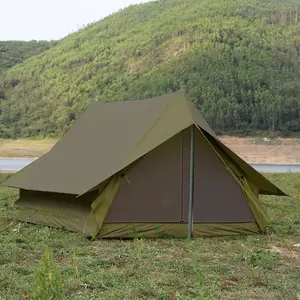Introduction: Efficiently setting up field camps is a fundamental skill for armed forces personnel, ensuring that operations can be conducted seamlessly in challenging environments. Military tents play a pivotal role in creating secure and functional field camps that support troops during deployments. In this blog, we’ll delve into the best practices for deploying military tents and establishing effective field camps that enhance operational capabilities.
- Site Assessment: Conduct a thorough assessment of the deployment area to choose a location that offers suitable terrain, visibility, and access to resources.
- Tent Placement: Strategically position tents to optimize security, visibility, and ease of access while maintaining a low profile to minimize detection.
- Security Measures: Implement security measures such as perimeter fencing, lighting, and sensor systems to enhance camp security and early threat detection.
- Communication Infrastructure: Set up communication infrastructure, including radio stations and satellite equipment, to ensure seamless communication with command centers.
- Operational Zones: Designate zones within the camp for specific purposes, such as sleeping quarters, command posts, medical facilities, and equipment storage.
- Camouflage and Concealment: Camouflage tents to blend with the surroundings, reducing their visibility from a distance and mitigating the risk of detection.
- Lighting and Night Vision: Install appropriate lighting systems that offer visibility during nighttime operations without compromising operational security.
- Quick Response Plans: Develop quick response plans for emergencies, outlining procedures for evacuations, medical situations, and unexpected threats.
- Consider Local Conditions: Factor in local weather, terrain, and cultural considerations when deploying tents and setting up camp.
Conclusion: Deploying military tents and establishing effective field camps require meticulous planning, attention to detail, and a thorough understanding of the operational environment. By following these best practices, armed forces personnel can ensure secure, functional, and efficient field camps that contribute to the success of missions and the well-being of personnel on the field.







